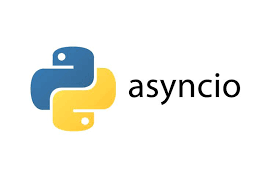前记 在文章《Python的可等待对象在Asyncio的作用》 中介绍了Python的可等待对象作用,特别是Task对象在启动的时候可以自我驱动,但是一个Task对象只能驱动一条执行链,如果要多条链执行(并发),还是需要EventLoop来安排驱动,接下来将通过Python.Asyncio库的源码来了解EventLoop是如何运作的。
1.基本介绍 Python.Asyncio是一个大而全的库,它包括很多功能,而跟核心调度相关的逻辑除了三种可等待对象外,还有其它一些功能,它们分别位于runners.py,base_event.py,event.py三个文件中。
runners.py文件有一个主要的类–Runner,它的主要职责是做好进入协程模式的事件循环等到初始化工作,以及在退出协程模式时清理还在内存的协程,生成器等对象。
协程模式只是为了能方便理解,对于计算机而言,并没有这样区分
event.py文件除了存放着EventLoop对象的接口以及获取和设置EventLoop的函数外,还有两个EventLoop可调度的对象,分别为Handler和TimerHandler,它们可以认为是EvnetLoop调用其它对象的容器,用于连接待调度对象和事件循环的关系,不过它们的实现非常简单,对于Handler,它的源码如下:
1 2 3 4 5 6 7 8 9 10 11 12 13 14 15 16 17 18 19 20 21 22 23 24 25 26 27 28 29 30 31 32 33 34 35 36 37 38 39 class Handle :def __init__ (self, callback, args, loop, context=None ):if context is None :False def cancel (self ):if not self._cancelled:True None None def cancelled (self ):return self._cancelleddef _run (self ):try :except (SystemExit, KeyboardInterrupt):raise except BaseException as exc:f'Exception in callback {cb} ' 'message' : msg,'exception' : exc,'handle' : self,
通过源码可以发现,Handle功能十分简单,提供了可以被取消以及可以在自己所处的上下文执行的功能,而TimerHandle继承于Handle比Handle多了一些和时间以及排序相关的参数,源码如下:
1 2 3 4 5 6 7 8 9 10 11 12 13 14 15 16 17 18 19 20 21 22 23 24 25 26 27 28 29 30 31 32 33 34 35 36 37 38 39 40 41 42 43 44 45 class TimerHandle (Handle ):def __init__ (self, when, callback, args, loop, context=None ):super ().__init__(callback, args, loop, context)False def __hash__ (self ):return hash (self._when)def __lt__ (self, other ):if isinstance (other, TimerHandle):return self._when < other._whenreturn NotImplemented def __le__ (self, other ):if isinstance (other, TimerHandle):return self._when < other._when or self.__eq__(other)return NotImplemented def __gt__ (self, other ):if isinstance (other, TimerHandle):return self._when > other._whenreturn NotImplemented def __ge__ (self, other ):if isinstance (other, TimerHandle):return self._when > other._when or self.__eq__(other)return NotImplemented def __eq__ (self, other ):if isinstance (other, TimerHandle):return (self._when == other._when and and and return NotImplemented def cancel (self ):if not self._cancelled:super ().cancel()def when (self ):return self._when
通过代码可以发现,这两个对象十分简单,而我们在使用Python.Asyncio时并不会直接使用到这两个对象,而是通过loop.call_xxx系列方法来把调用封装成Handle对象,然后等待EventLoop执行。loop.call_xxx系列方法可以认为是EventLoop的注册操作,基本上所有非IO的异步操作都需要通过loop.call_xxx方法来把自己的调用注册到EventLoop中,比如Task对象就在初始化后通过调用loop.call_soon方法来注册到EventLoop中,loop.call_sonn的实现很简单,它的源码如下:
1 2 3 4 5 6 7 8 9 10 11 12 13 14 15 class BaseEventLoop :def call_soon (self, callback, *args, context=None ):return handledef _call_soon (self, callback, args, context ):return handle
可以看到call_soon真正相关的代码只有10几行,它负责把一个调用封装成一个Handle,并添加到self._reday中,从而实现把调用注册到事件循环之中。
loop.call_xxx系列函数除了loop.call_soon系列函数外,还有另外两个方法–loop.call_at和loop.call_later,它们类似于loop.call_soon,不过多了一个时间参数,来告诉EventLoop在什么时间后才可以调用,同时通过loop.call_at和loop.call_later注册的调用会通过Python的堆排序模块headpq注册到self._scheduled变量中,具体代码如下:
1 2 3 4 5 6 7 8 9 10 11 12 13 14 15 16 17 18 class BaseEventLoop :def call_later (self, delay, callback, *args, context=None ):if delay is None :raise TypeError('delay must not be None' )return timerdef call_at (self, when, callback, *args, context=None ):if when is None :raise TypeError("when cannot be None" )True return timer
2.EventLoop的调度实现 在文章《Python的可等待对象在Asyncio的作用》 中已经分析到了runner会通过loop.run_until_complete来调用mainTask从而开启EventLoop的调度,所以在分析EventLoop的调度时,应该先从loop.run_until_complete入手,对应的源码如下:
1 2 3 4 5 6 7 8 9 10 11 12 13 14 15 16 17 18 19 20 21 22 23 24 25 26 27 28 29 30 31 32 33 34 35 36 37 38 39 40 41 42 43 44 45 46 47 48 49 50 51 52 53 54 55 56 57 58 59 class BaseEventLoop :def run_until_complete (self, future ):not futures.isfuture(future)if new_task:False try :except :if new_task and future.done() and not future.cancelled():raise finally :if not future.done():raise RuntimeError('Event loop stopped before Future completed.' )return future.result()def run_forever (self ):try :while True :if self._stopping:break finally :False None None )False )
这段源码并不复杂,它的主要逻辑是通过把Corotinue转为一个Task对象,然后通过Task对象初始化时调用loop.call_sonn方法把自己注册到EventLoop中,最后再通过loop.run_forever中的循环代码一直运行着,直到_stopping被标记为True:
1 2 3 4 5 while True :if self._stopping:break
可以看出,这段代码是确保事件循环能一直执行着,自动循环结束,而真正调度的核心是_run_once函数,它的源码如下:
1 2 3 4 5 6 7 8 9 10 11 12 13 14 15 16 17 18 19 20 21 22 23 24 25 26 27 28 29 30 31 32 33 34 35 36 37 38 39 40 41 42 43 44 45 46 47 48 49 50 51 52 53 54 55 56 57 58 59 60 61 62 63 64 65 66 67 68 69 70 71 72 73 74 75 76 77 78 79 80 81 82 83 84 85 86 87 88 class BaseEventLoop :def _run_once (self ):len (self._scheduled)if (sched_count > _MIN_SCHEDULED_TIMER_HANDLES and for handle in self._scheduled:if handle._cancelled:False else :0 else :while self._scheduled and self._scheduled[0 ]._cancelled:1 False None if self._ready or self._stopping:0 elif self._scheduled:0 ]._whenmin (max (0 , when - self.time()), MAXIMUM_SELECT_TIMEOUT)while self._scheduled:0 ]if handle._when >= end_time:break False len (self._ready)for i in range (ntodo):if handle._cancelled:continue if self._debug:try :if dt >= self.slow_callback_duration:'Executing %s took %.3f seconds' ,finally :None else :None
通过源码分析,可以很明确的知道调度逻辑中第一步是先规整self._scheduled,在规整的过程是使用堆排序来进行的,因为堆排序在调度的场景下效率是非常高的,不过这段规整代码分成两种,我猜测是当需要取消的数量过多时直接遍历的效率会更高。self._scheduled后,就进入第二步,该步骤开始等待系统事件循环返回对应的事件,如果self._ready中有数据,就不做等待了,需要马上到下一步骤,以便能赶紧安排调度。self._process_events方法处理对应的事件,并把事件对应的回调存放到了self._ready中,最后再遍历self._ready中的所有Handle并逐一执行(执行时可以认为EventLoop把控制权返回给对应的调用逻辑),至此一个完整的调度逻辑就结束了,并进入下一个调度逻辑。
3.网络IO事件的处理
注:由于系统事件循环的限制,所以文件IO一般还是使用多线程来执行,具体见:https://github.com/python/asyncio/wiki/ThirdParty#filesystem
在分析EventLoop调度实现的时候忽略了self._process_events的具体实现逻辑,因为_process_events方法所在asyncio.base_event.py文件中的BaseEventLoop类并未有具体实现的,因为网络IO相关的需要系统的事件循环来帮忙处理,所以与系统事件循环相关的逻辑都在asyncio.selector_events.py中的BaseSelectorEventLoop类中。BaseSelectorEventLoop类封装了selector模块与系统事件循环交互,使调用者不需要去考虑sock的创建以及sock产生的文件描述符的监听与注销等操作,下面以BaseSelectorEventLoop中自带的pipe为例子,分析BaseSelectorEventLoop是如何进行网络IO事件处理的。
在分析之前,先看一个例子,代码如下:
1 2 3 4 5 6 7 8 9 10 11 12 13 14 import asyncioimport threadingdef task ():"task" )def run_loop_inside_thread (loop ):
如果直接运行这个例子,它并不会输出task(不过在IDE使用DEBUG模式下线程启动会慢一点,所以会输出的),因为在调用loop.run_forever后EventLoop会一直卡在这段逻辑中:
1 event_list = self._selector.select(timeout)
所以调用loop.call_soon并不会使EventLoop马上安排调度,而如果把call_soon换成call_soon_threadsafe则可以正常输出,这是因为call_soon_threadsafe中多了一个self._write_to_self的调用,它的源码如下:
1 2 3 4 5 6 7 8 9 class BaseEventLoop :def call_soon_threadsafe (self, callback, *args, context=None ):"""Like call_soon(), but thread-safe.""" return handle
由于这个调用是涉及到IO相关的,所以需要到BaseSelectorEventLoop类查看,接下来以pipe相关的网络IO操作来分析EventLoop是如何处理IO事件的(只演示reader对象,writer对象操作与reader类似),对应的源码如下:
1 2 3 4 5 6 7 8 9 10 11 12 13 14 15 16 17 18 19 20 21 22 23 24 25 26 27 28 29 30 31 32 33 34 35 36 37 38 39 40 41 42 43 44 45 46 47 48 49 50 51 52 53 54 55 56 57 58 59 60 61 62 63 64 65 66 67 68 69 70 71 72 73 74 75 76 77 78 79 80 81 82 83 84 85 86 87 88 89 90 91 92 93 94 95 96 97 98 99 100 class BaseSelectorEventLoop (base_events.BaseEventLoop ):def __init__ (self, selector=None ):super ().__init__()if selector is None :def _make_self_pipe (self ):False )False )1 def _add_reader (self, fd, callback, *args ):None )try :except KeyError:None ))else :if reader is not None :return handledef _read_from_self (self ):while True :try :4096 )if not data:break except InterruptedError:continue except BlockingIOError:break def _close_self_pipe (self ):None None 1 def _remove_reader (self, fd ):if self.is_closed():return False try :except KeyError:return False else :if not mask:else :None , writer))if reader is not None :return True else :return False
通过源码中的创建部分可以看到,EventLoop在启动的时候会创建一对建立通信的sock,并设置为非阻塞,然后把对应的回调封装成一个Handle对象并注册到系统事件循环中(删除则进行对应的反向操作),之后系统事件循环就会一直监听对应的事件,也就是EventLoop的执行逻辑会阻塞在下面的调用中,等待事件响应:
1 event_list = self._selector.select(timeout)
这时如果执行loop.call_soon_threadsafe,那么会通过write_to_self写入一点信息:
1 2 3 4 5 6 7 8 9 10 def _write_to_self (self ):if csock is None :return try :b'\0' )except OSError:if self._debug:"Fail to write a null byte into the self-pipe socket" , exc_info=True )
由于csock被写入了数据,那么它对应的ssock就会收到一个读事件,系统事件循环在收到这个事件通知后就会把数据返回,然后EventLoop就会获得到对应的数据,并交给process_events方法进行处理,它的相关代码如下:
1 2 3 4 5 6 7 8 9 10 11 12 13 14 15 16 17 18 19 20 21 22 23 24 25 26 27 28 29 30 31 32 33 34 35 36 37 38 39 40 41 42 43 44 45 46 47 48 49 50 51 52 class BaseSelectorEventLoop :def _process_events (self, event_list ):for key, mask in event_list:if mask & selectors.EVENT_READ and reader is not None :if reader._cancelled:else :if mask & selectors.EVENT_WRITE and writer is not None :if writer._cancelled:else :def _add_callback (self, handle ):assert isinstance (handle, events.Handle), 'A Handle is required here' if handle._cancelled:return assert not isinstance (handle, events.TimerHandle)def _remove_reader (self, fd ):if self.is_closed():return False try :except KeyError:return False else :if not mask:else :None , writer))if reader is not None :return True else :return False
从代码中可以看出_process_events会对事件对应的文件描述符进行处理,并从事件回调中获取到对应的Handle对象添加到self._ready中,由EventLoop在接下来遍历self._ready并执行。
可以看到网络IO事件的处理并不复杂,因为系统事件循环已经为我们做了很多工作了,但是用户所有与网络IO相关的操作都需要有一个类似的操作,这样是非常的繁琐的,幸好asyncio库已经为我们做了封装,我们只要调用就可以了,方便了很多。


